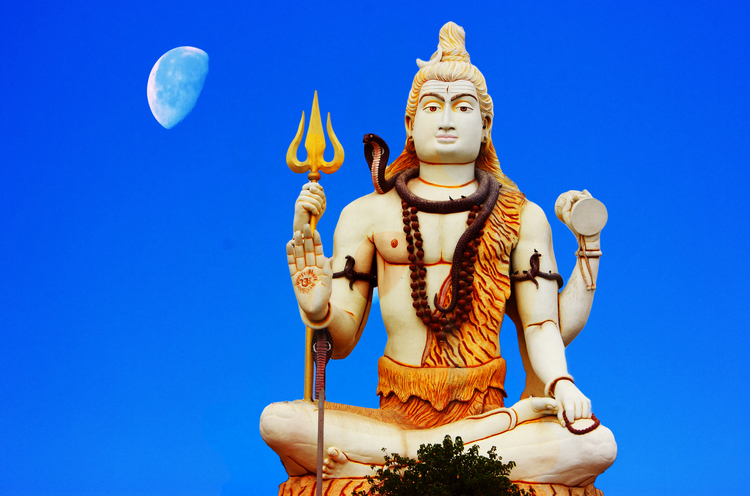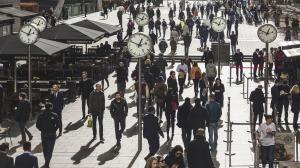
AM and PM Explained
How does the 12-hour clock system work? Is midnight 12 am or 12 pm?
Maha Shivratri is an annual festival honoring Shiva, the Hindu God of destruction. People celebrate by fasting for a whole day and staying awake all night. They also chant hymns and sing devotional songs, called bhajans.

The Hindu god Shiva is one of the three main gods in Hindu mythology.
©iStock.com/naveen0301
It is a solemn Hindu festival devoted to introspection and meditation. The day reminds worshippers to work towards overcoming darkness and ignorance.
Maha Shivratri, which means the great night of Shiva in Hindi and Sanskrit (Maha = great, Ratri = night), is one of 12 Shiv Ratris during the year. The 14th day of the Waning Moon period of every lunar month is devoted to Shiva. These nights are also known as Masik (monthly) or Maas Shivratri.
The many different kinds of Hindu calendars
Both calendar dates fall on the same day in the Western calendar—usually sometime in February or March.
Hindu calendars are lunisolar and follow the Moon's movement in the sky to determine the dates of holidays and festivals. Because of this, date of Maha Shivaratri varies each year in the Gregorian Calendar.
In India, Maha Shivaratri is a Gazetted Holiday, which means that all central government employees have a day off. Indian states have their own rules about granting the day off.
In the Indian state of Jammu and Kashmir, Maha Shivratri is called Herath. Unlike the rest of India, it is celebrated on the 13th (triyodashi) day of Phalguna. The next day is spent feasting.
 Nepal:
Nepal: Sri Lanka:
Sri Lanka: Pakistan:
Pakistan: Bangladesh:
Bangladesh: Mauritius:
Mauritius:Maha Shivratri is celebrated differently in different communities and regions. Devotees usually fast (vrat) for 24 hours and stay awake during the night, chanting sacred mantras and singing devotional songs called bhajans in praise of Shiva. One of the most repeated chants during the occasion is om Namah Shivaya.
They visit Shiva temples to end their fast, burning incense and bathing the lingam or linga with rose water, milk, and honey. This ritual is called puja. The lingam is a phallus-shaped representation of Shiva.
Although Maha Shivratri is a solemn holiday, many Hindus like to celebrate it with lively fairs. Especially towns and villages with temples host these fairs for the believers who come to pray to Shiva.
A unique tradition associated with the Maha Shivratri celebrations is the consumption of thandai, a drink made of cannabis (bhang), sweet almonds, and milk.
In many parts of India, including Tamil Nadu and Maharashtra, temples organize dance festivals called Natyanjali. During the multi-day festival, traditional dancers use their art to worship Natraj, Shiva's incarnation as the lord of dance.
In Hinduism, Shiva is one of the three supreme lords, the other two being Brahma and Vishnu.
Also known as Mahadeva, the great God, Shiva destroys to create. He is a kind god who lives a simple life on Mount Kailasa. He is also depicted as an angry god who destroys ignorance, darkness, and selfishness. His other names include Rudra, Shankar, Mahesh, and Bholenath.
Shiva is often represented as sitting cross-legged with a snake coiled around his neck and his hair piled high with a Crescent Moon in it and the river Ganges flowing from it. On his forehead is his third eye, which destroys the world when opened. The trident is his weapon of choice.
In the Shaivite tradition within Hinduism, Shiva is the supreme being, while in Shaktism, Shiva is seen as inseparable from the goddess Shakti.

How does the 12-hour clock system work? Is midnight 12 am or 12 pm?

Why do many countries set the clocks back and forth an hour twice a year?

Why are there 12 months? How long are they, and what do the month names mean?

Coordinated Universal Time (UTC) is the basis for civil time today. This 24-hour time standard is kept using highly precise atomic clocks combined with the Earth's rotation.